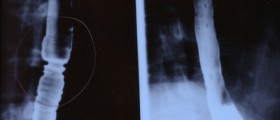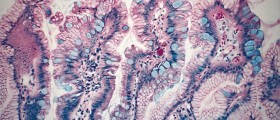
The esophagus is anatomically located behind the trachea and looks like a tube connecting the throat and the stomach. Its function is to transfer food we eat to the stomach and enable digestion of this food. This organ comprises several layers of different cells and each of them can change malignantly and form the cancer. However, esophageal cancer is usually known to start in the inner layer of esophageal cells and then to progress further to the outside of this organ.
Every year, more than 14.000 people are diagnosed to suffer from esophageal cancer and slightly fewer people die because of this disease. Most patients are men and many of them are of African American descent (in the United States, US). There are 10 to 100 times more people suffering from this cancer in Asia and Africa, for these continents are known to have much higher incidence of esophageal cancer than the US.
Types of Esophageal Cancer
Depending on the location of the cancer and the affected cells, esophageal cancer can be adenocarcinoma or squamous cell carcinoma. There are other types of esophageal cancers, but these appear very rarely.
Adenocarcinoma is known to develop in the glandular tissue of the lower part of the esophagus, closer to the stomach. Squamous cell carcinoma affects the top layer of esophageal lining cells (squamous cells, thus the name of this type of carcinoma). This type of esophageal cancer can start to grow in any part of the esophagus. The mentioned cancers may start in different or the same part of the esophagus, but patients experience similar symptoms (swallowing problems, chest pressure and pain, weight loss…) and the treatment for both of these conditions is very similar.No Exact Causes, Just Risk Factors
There is no one who can tell what causes esophageal cancer simply because not even doctors know what is or are exact causes of the disease. Reflux disease (GERD, gastroesophageal reflux disease) is associated with esophageal cancer and may be considered as a risk factor for this medical problem. When the stomach acid returns to the esophagus, it damages the lower portion of this organ, provokes Barrett’s esophagus and may eventually cause this cancer.
Risk factors are various and include older age (over 70 years), male sex, smoking, use of tobacco, heavy consumption of alcohol, swallowing caustic irritants and also diet poor in vitamins and minerals. Being overweight or obese is also known to increase the chances of one to develop esophageal cancer, as well as diseases like tylosis or achalasia.

















Your thoughts on this
Loading...